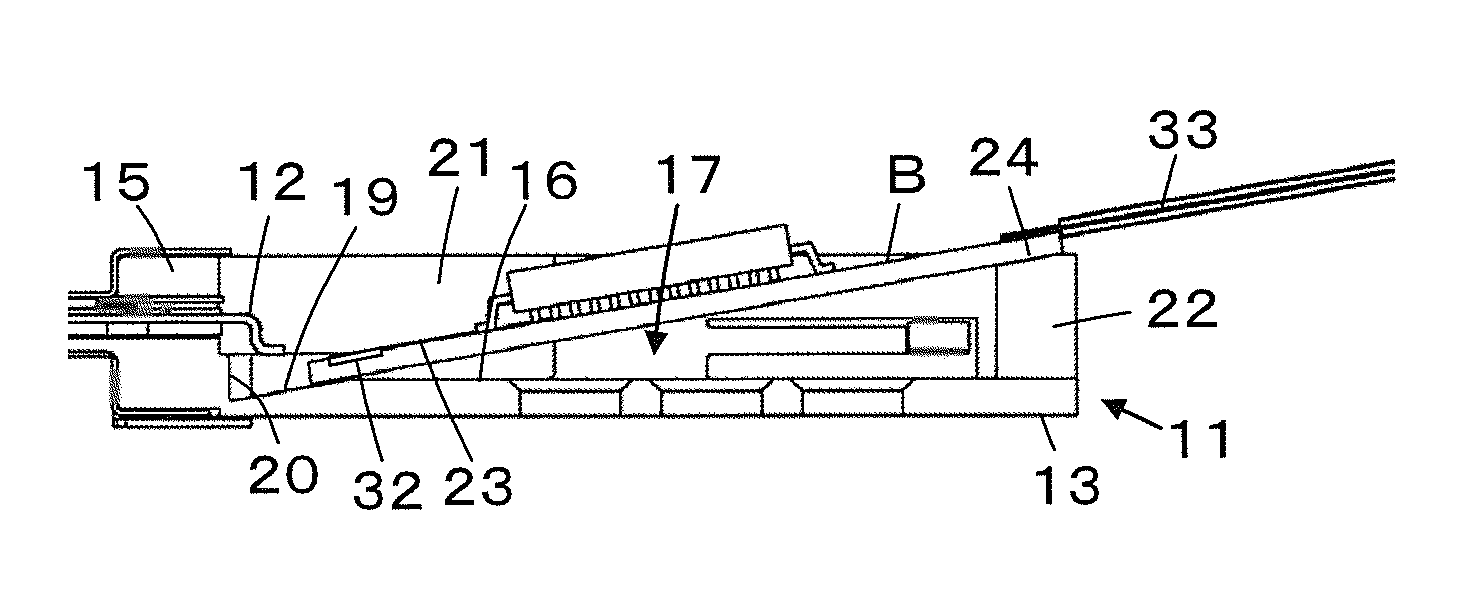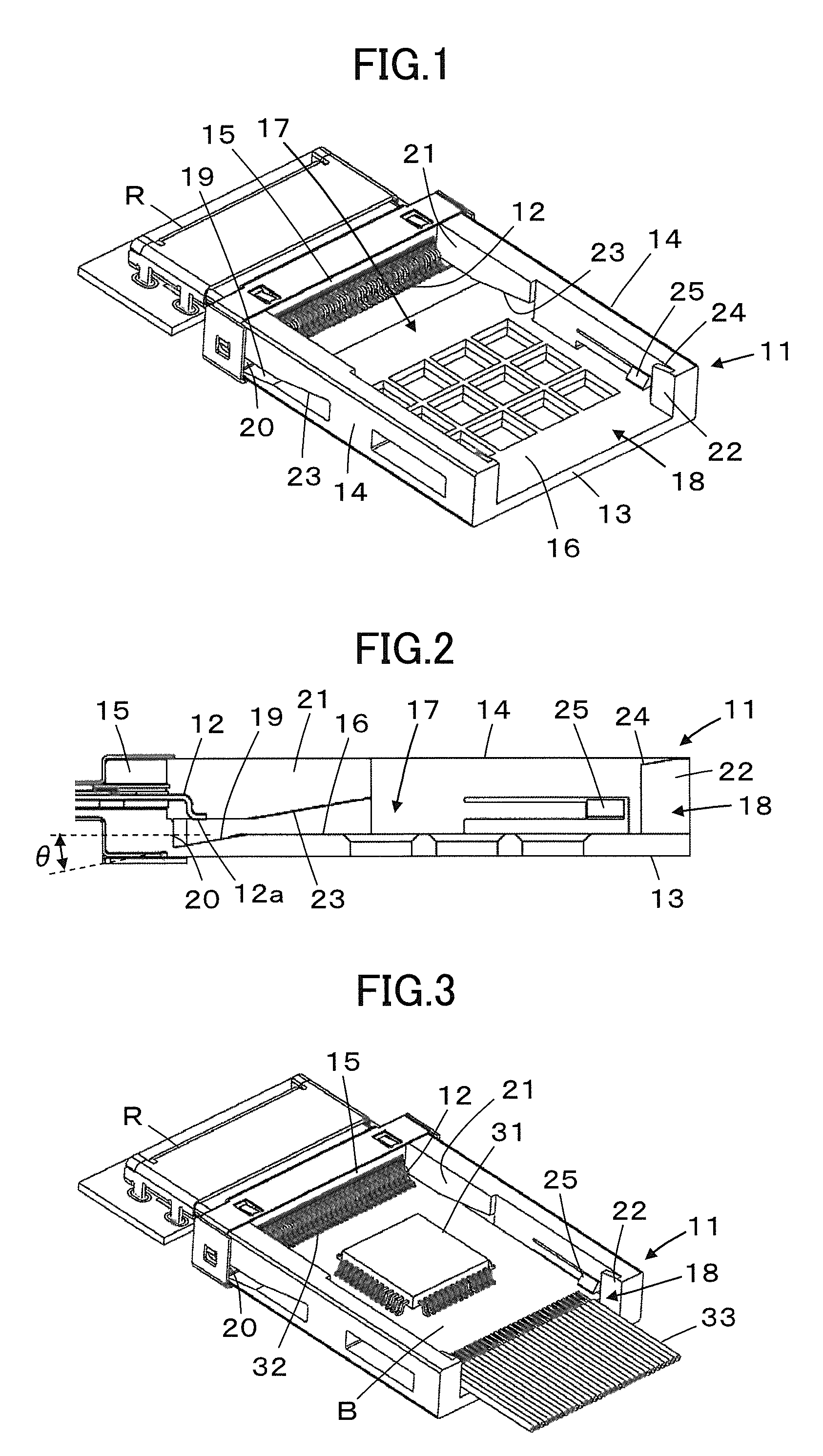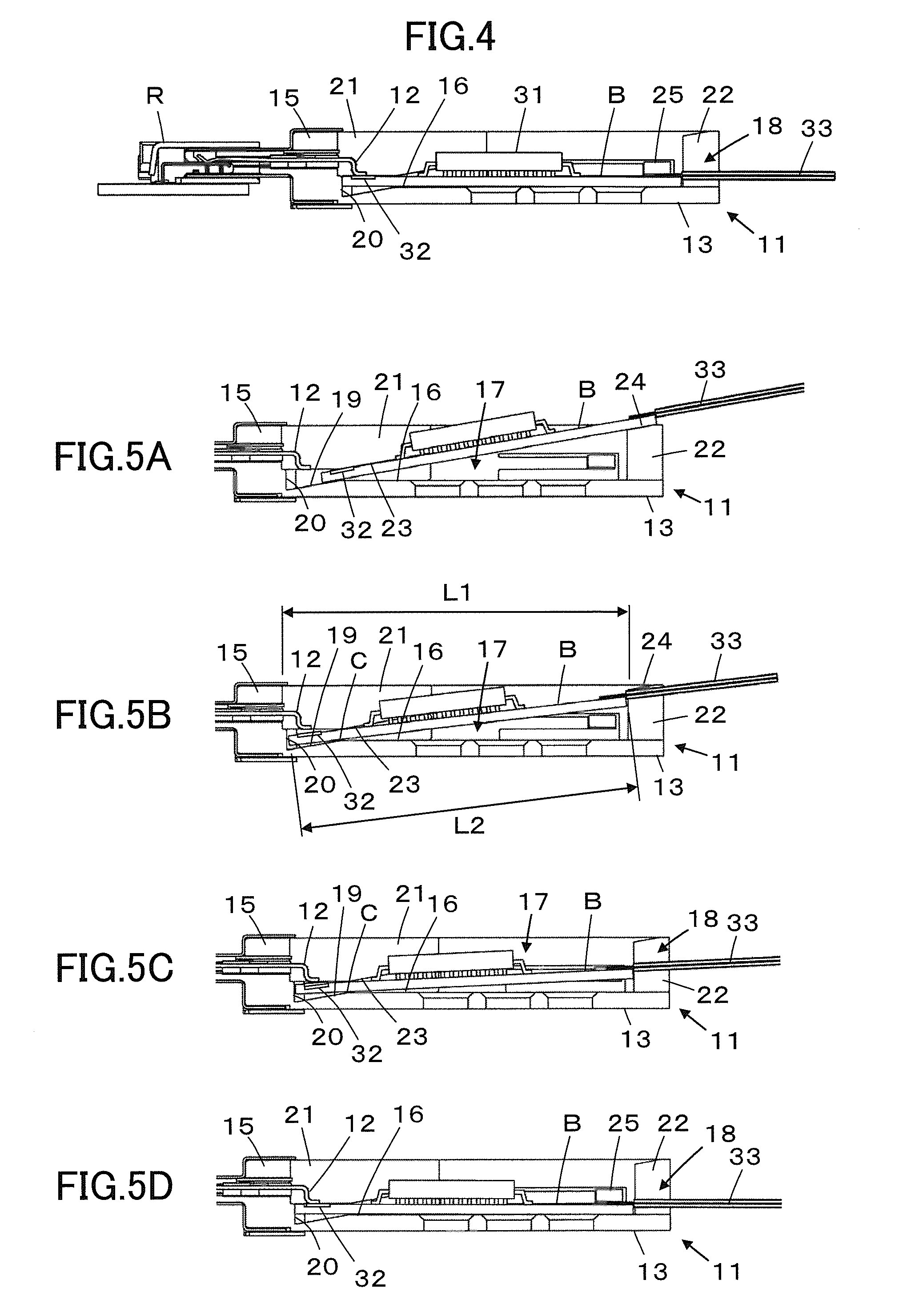Connecting component
a technology of connecting components and components, applied in the direction of coupling devices, two-part coupling devices, electrical devices, etc., can solve the problems of high accuracy and difficulty in signal transmission at such high speed as about 10 gbps, and achieve excellent high frequency characteristics
- Summary
- Abstract
- Description
- Claims
- Application Information
AI Technical Summary
Benefits of technology
Problems solved by technology
Method used
Image
Examples
embodiment 1
[0027]FIGS. 1 and 2 illustrate a configuration of a connecting component according to Embodiment 1 of the invention. The connecting component constitutes a part of a plug connector part of a pair of connector parts connected to each other and comprises a housing 11 shaped generally like a tray and a plurality of housing connection terminals 12 secured to the housing 11.
[0028]The housing 11 comprises a rectangular base portion 13 having a pair of longer sides and a pair of shorter sides, a pair of upright side walls 14 provided opposite each other along the longer sides of the base portion 13, and an end wall 15 erected along one of the pair of the shorter sides of the base portion 13 and connected with both the side walls 14. A top surface 16 of the base portion 13 is surrounded on three sides by the pair of side walls 14 and the end wall 15, forming a recessed containing portion 17 for a subsidiary board. On the other shorter side of the base portion 13 opposite the end wall 15, no...
embodiment 2
[0051]While the connecting component according to Embodiment 1 is adapted to attach a subsidiary board to a plug connector part, a connecting component is used to attach a subsidiary board to a main board in Embodiment 2. FIG. 9 illustrates a connecting component according to Embodiment 2.
[0052]The connecting component comprises a housing 41 secured to a main board P and housing connection terminals 12 connected to the housing 41.
[0053]The housing 41 comprises support members 42 placed in contact with the top surface of the main board P to support the housing 41 but otherwise has the same configuration as the housing 11 of the connecting component according to Embodiment 1. Thus, the top surface 16 of the base portion 13 is surrounded on three sides by the pair of side walls 14 and the end wall 15, forming the subsidiary board containing portion 17 having a recessed shape. The remaining one side of the top surface 16 of the base portion 13 has the opening 18. The first slope 19 is f...
embodiment 3
[0058]FIG. 14 illustrates a connecting component according to Embodiment 3. The connecting component is the same as one according to Embodiment 2 illustrated in FIG. 9 except for the housing 41 being divided into two members.
[0059]The connecting component comprises a housing 41a secured to the main board P, the housing connection terminals 12 connected to the housing 41a, and an auxiliary member 41b detachably attached to the housing 41a.
[0060]The housing 41a comprises a base portion 13a, a pair of side walls 14a, and the end wall 15. The first slope 19 is formed on a top surface 16a on the side of the base portion 13a closer to the end wall 15. The bosses 21 are formed on the pair of the side walls 14a near the end wall 15. The bosses 21 each have the second slopes 23 formed on the lower surfaces thereof. The wall surface of the end wall 15 forms the abutment 20. The side walls 14a each have the support member 42 on the outside thereof.
[0061]The auxiliary member 41b comprises a ba...
PUM
 Login to View More
Login to View More Abstract
Description
Claims
Application Information
 Login to View More
Login to View More - R&D
- Intellectual Property
- Life Sciences
- Materials
- Tech Scout
- Unparalleled Data Quality
- Higher Quality Content
- 60% Fewer Hallucinations
Browse by: Latest US Patents, China's latest patents, Technical Efficacy Thesaurus, Application Domain, Technology Topic, Popular Technical Reports.
© 2025 PatSnap. All rights reserved.Legal|Privacy policy|Modern Slavery Act Transparency Statement|Sitemap|About US| Contact US: help@patsnap.com



